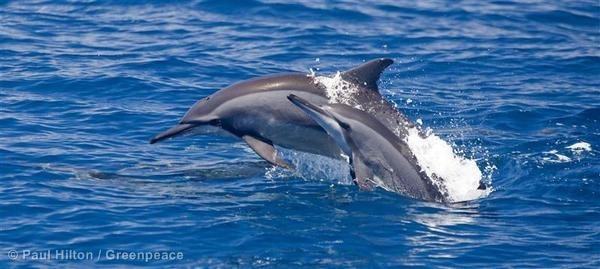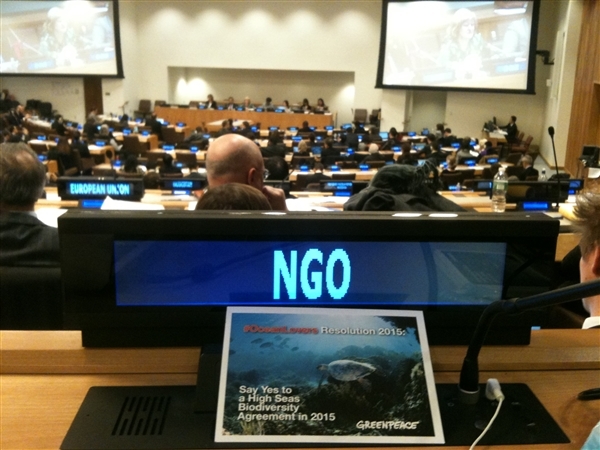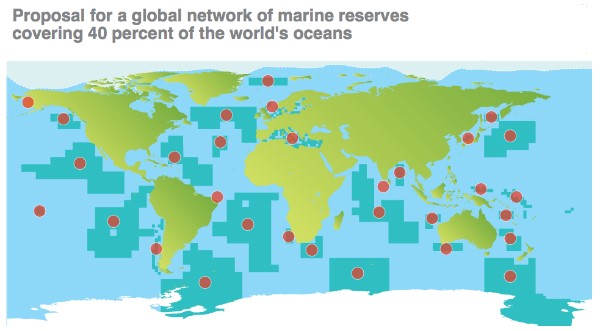
It is time for Ocean Lovers worldwide to celebrate! After years of political foot-dragging, and four hectic days of negotiations at the United Nations, a breakthrough came in the wee hours of Saturday morning, 24 January: governments around the world agreed to develop a legally-binding treaty to protect marine life beyond national territorial waters. With this historic decision, they began the process of setting rules to create ocean sanctuaries and protect the high seas – the vast areas of the ocean that belong to you, me and everyone. The agreement could also make it mandatory to conduct environmental impact assessments before human activities are allowed to take place in the vast ocean commons.
This significant progress would not have come without a passionate call for high seas protection from all over the globe. This week alone, #OceanLovers put the spotlight on the UN meeting with almost 6000 tweets and thousands more Facebook posts, letting delegates know the world expected them to act.
The UN has formally recognised that Ocean governance is about protection, not simply about ‘managing the exploitation’ of the oceans’ resources. We now have a golden opportunity to set global standards for oceans protection and integrate the patchwork of ocean organisations, enhancing cooperation between those regulating fishing, mining, shipping, and pollution.
Of course, this will be a huge undertaking. Setting the rules that will govern the protection of the largest biosphere on earth will not be quick or easy, and it will take even longer for these rules to be implemented out at sea. But the #waveofchange we wanted finally begins, here and now.
Big change looks impossible when you start, and inevitable when you finish – Bob Hunter
It was nearly a decade ago that we first challenged the world’s governments to create a global network of marine reserves covering 40% of the world’s oceans with the publication of our Roadmap to Recovery.
click to view interactive map
This groundbreaking proposal demonstrated that there was sufficient scientific information available to establish an effective system. Since then, the Convention on Biological Diversity adopted similar criteria and started to identify areas on the high seas in need of protection (including the waters around the North Pole where we want to establish an Arctic sanctuary). Of course, having set out this vision we then had to see how such a network could actually be established since there is currently no mechanism to create ocean sanctuaries on the high seas. Thus grew the notion and the campaign for the UN High Seas Biodiversity Agreement, attracting thousands of supporters wordwide.
In 2012, we managed to secure one of the very few positive outcomes of Rio+20: a deadline of September 2015 by which the UN had to come to a decision on whether to commence negotiations for this new crucial high seas agreement.

Last week, with the Rio+20 deadline looming, Ocean Lovers’ calls for ocean protection were met with overwhelming support from the majority of countries. Together, those calls became an irresistible force, and the support gave our champions the strength to convince the handful of (powerful) countries that had been opposing the agreement for years. A key #OceanLovers Resolution for 2015 called governments to “Say YES! to a High Seas Biodiversity Agreement” and in the small hours of Saturday, they finally did.
We were particularly happy to see the United States come onboard, as they have been leading the opposition for many years. It is clear that the thousands of messages sent to US Secretary of State John Kerry – a declared Ocean Lover – had a lot to do with this change. In June 2014, Greenpeace and others around the world (including in Sweden, Germany, France, India, Australia, Korea, and Argentina) sent “Dear John” letters to US embassies and to Secretary Kerry directly, urging him to “Act for the High Seas” during the Our Ocean conference in Washington DC. Last week alone, John Kerry’s Twitter account received more than a thousand messages in just one day, asking him to listen and act for the ocean. A massive ‘thank you’ to all you #OceanLovers out there who took action. As John Kerry said at his conference: “The Ocean movement is a hard ass group of folks”!
The next phase of our campaign will nonetheless be tough, especially as we need to stand together and fight ocean exploiting industries such as those behind the poorly performing Regional Fisheries Management Organizations (RFMOs) which have overseen a dramatic fall in the majority of world fish stocks.
We still have a long way to reach our final destination of a network of sanctuaries covering 40% of our oceans. The formal outcome of the meetings last week now must be adopted by the UN General Assembly by September 2015 in order to move forward with negotiations for a legally binding agreement under the United Nations Convention on the Law of the Sea (UNCLOS), which must be implemented over the coming years. Our voyage for Oceans Protection has begun and the growing strength of the Ocean Lovers movement will support us through the many battles that will lie ahead. Stay with us for the course of this journey, #OceanLovers: we have turned a significant corner but we will need all your help to achieve total victory for our oceans.
Sofia Tsenikli is a Senior Political Advisor on Oceans for Greenpeace International.

